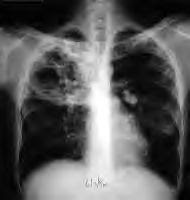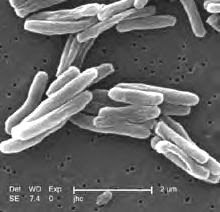CCL5 participates in early protection against Mycobacterium tuberculosis.
J Leukoc Biol. 2010 Apr 6;
Authors: Vesosky B, Rottinghaus EK, Stromberg P, Turner J, Beamer G
Control of M.tb, the causative agent of TB, requires immune cell recruitment to form lung granulomas. The chemokines and chemokine receptors that promote cell migration for granuloma formation, however, are not defined completely. As immunity to M.tb manifests slowly in the lungs, a better understanding of specific roles for chemokines, in particular those that promote M.tb-protective TH1 responses, may identify targets that could accelerate granuloma formation. The chemokine CCL5 has been detected in patients with TB and implicated in control of M.tb infection. To define a role for CCL5 in vivo during M.tb infection, CCL5 KO mice were infected with a low dose of aerosolized M.tb. During early M.tb infection, CCL5 KO mice localized fewer APCs and chemokine receptor-positive T cells to the lungs and had microscopic evidence of altered cell trafficking to M.tb granulomas. Early acquired immunity and granuloma function were transiently impaired when CCL5 was absent, evident by delayed IFN-gamma responses and poor control of M.tb growth. Lung cells from M.tb-infected CCL5 KO mice eventually reached or exceeded the levels of WT mice, likely as a result of partial compensation by the CCL5-related ligand, CCL4, and not because of CCL3. Finally, our results suggest that most T cells use CCR5 but not CCR1 to interact with these ligands. Overall, these results contribute to a model of M.tb granuloma formation dependent on temporal regulation of chemokines rather than on redundant or promiscuous interactions.
http://medicine.journalfeeds.com/hematology/j-leukoc-biol/ccl5-participates-in-early-protection-against-mycobacterium-tuberculosis/20100408/
WHAT'S NEW IN TUBERCULOSIS
Saturday, 10 April 2010
Subscribe to:
Post Comments (Atom)





No comments:
Post a Comment